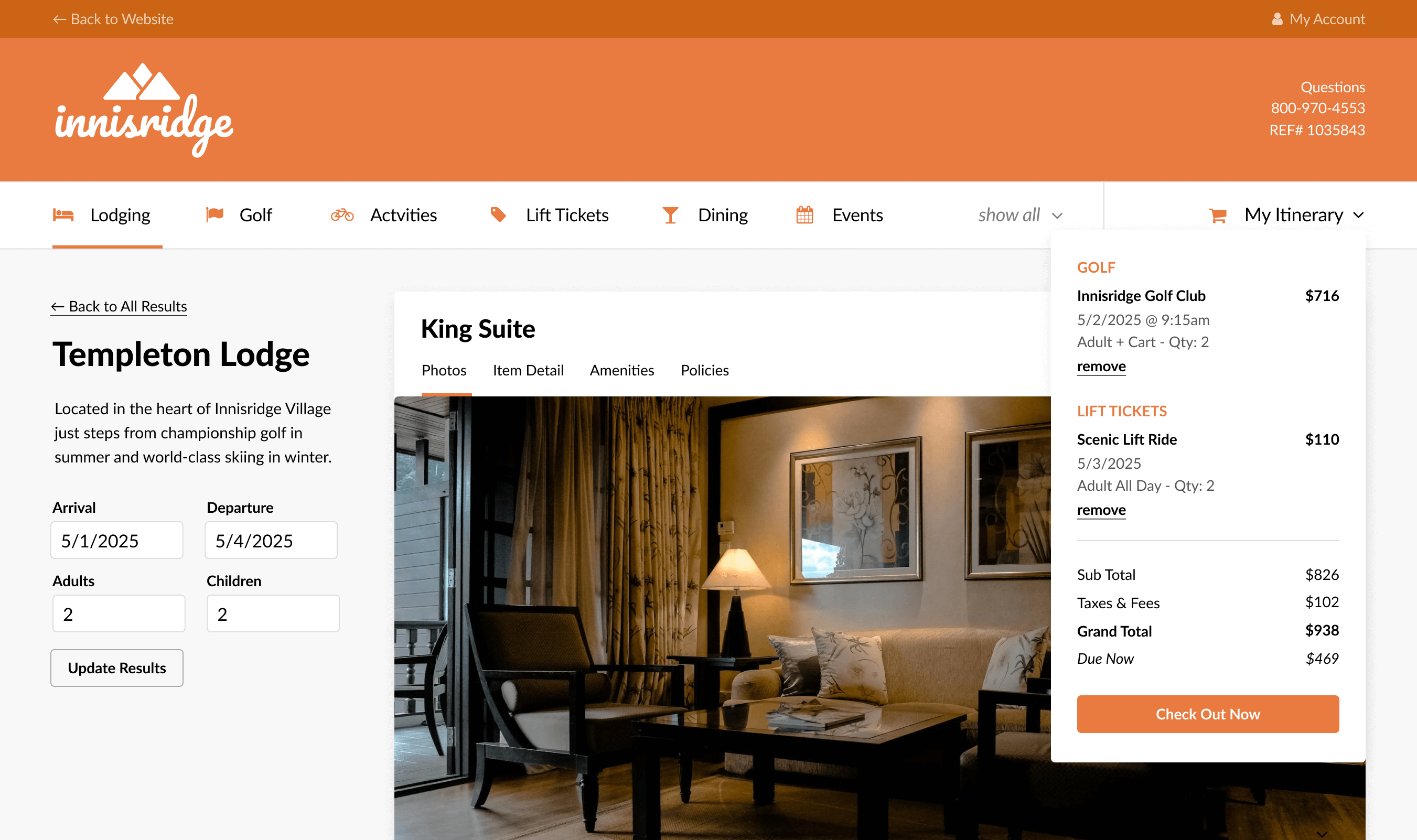
Trends

After three and a half years of dramatic ups and downs due primarily to the pandemic, economic volatility, and struggles along the way, lodging at western mountain destinations is settling into the more stable and sustainable patterns before the pandemic changed everything in March 2020. The observation was shared in the Market Briefing released by DestiMetrics,* the Business Intelligence division of Inntopia, in their most recent monthly assessment. Occupancy seems to be settling into more familiar patterns for both summer and winter and even though daily rates soared along with other post-pandemic inflationary trends, those rates are now stabilizing and in some cases are drifting down slightly as rate sensitivity is still a factor in bookings for the past summer and upcoming winter.
September fairly stable
Occupancy during September was down 2.2 percent in a year-over-year comparison to September 2022 while the Average Daily Rate (ADR) was up a slight 1.2 percent and led to a 1.1 percent decline in revenues for the month. In comparison to four years ago and prior to the pandemic, September occupancy was down 2.1 percent compared to September 2019 but consistent with the strongly higher rates of the past two years, ADR was up a dramatic 48.6 percent compared to that month and delivered aggregated revenues that were up 45.5 percent.
Summer occupancy a bit down; daily rates edged up
With only a few weeks of the official summer season remaining, occupancy for the full six- month period is likely to be very similar to last summer. As of Sept. 30, actual occupancy along with on-the-books for the month of October is declining 1.5 percent compared to last summer at this time with modest declines in five of the six months. While August and September each slipped approximately two percent, October is eking out an 0.2 percent gain for that month. Daily rates for the full summer are only up 1.4 percent from one year ago but varying gains were posted in four of the six months with June leading the way—up 6.9 percent compared to last year.
When compared to the summer of 2019, the contrast is more striking. Occupancy for the summer of 2023 is down a notable 7.5 percent with double-digit decreases in both May and August. But ADR that is up 42.7 percent is more than compensating for the declines in occupancy and is driving a very strong 32.3 percent increase in summer revenues compared to four years ago.
“Occupancy will almost certainly finish below last year but with slightly better rates,” explained Tom Foley, senior vice president of Business Intelligence for Inntopia. “As rates settle into these below inflationary levels and stop bouncing all over the place, these now moderate and modest shifts in pricing are leading to a more sustainable and predictable pattern.”
Economic indicators
The Dow Jones Industrial Average (DJIA) declined for the second consecutive month in September—dropping 3.5 percent to close at 33,507.5 points on top of the 2.4 percent decline in August. Volatility was apparent as the number of advancing and declining daily closings were nearly even with 12 of the 20 trading days posting gains and eight days declining. Ongoing disputes in the auto industry, congressional dysfunction surrounding funding the government, and strong jobs and wage reports that could influenced the Federal Reserve’s decisions on interest rates all combined to create some jitters among investors. Despite the downturn, the DJIA is 16.6 percent higher than one year ago and that strength is reassuring for consumers and helps foster discretionary spending—including travel. But further battles in Congress and the escalating Middle East situation will likely lead to further disruption this month and into November.
Reflecting the downturn in the DJIA, both the Consumer Confidence Index (CCI) and the Consumer Sentiment Index (CSI) also declined in September for the second consecutive month with the CCI dropping another 5.2 percent and marking the sixth decline in the past 12 months. Consumers indicated that fears of a recession rose and the persistence of high prices for food and gasoline contributed to their lower level of optimism along with concerns about government funding and political tensions. The CSI from the University of Michigan also declined and for essentially the same reasons as the CCI. “The results from both indices can be directly correlated to travel price tolerance. Multiple negative forces including the struggle for government funding and the crisis in the Middle East could lead to prices softening in the months ahead—particularly if snow conditions are not favorable,” observed Foley.
Unlike the other indicators, the national Unemployment Rate remained unchanged during September at 3.8 percent with nearly the double the number of new jobs added in August—a very strong 336,000. July and August job numbers were also revised up an additional 99,000 new jobs for the two months. The updated data reveals a three-month average of 226,000 new jobs per month—well above the 150,000 previously expected. The Leisure & Hospitality sector once again led the way during September with 96,000 new jobs–primarily in the food services and drinking establishments sub-category.
Winter season—looking a lot like last year
Five of the six winter months are now on-the-books for the upcoming season and as of Sept. 30, is looking similar to last year at this time for the overall season. However, some notable shifts in the timing of many school breaks over the holiday season this year will rearrange holiday visitation because of those changes. In a year-over-year comparison to last year, occupancy for November through March is down a scant 0.9 percent with slight upticks in November, December and January. ADR for those same winter months is up a moderate three percent with increases in all months except December. March is currently showing the largest increase—up 6.8 percent.
Interestingly, when compared to four years ago and the last pre-pandemic booking season, occupancy is up 6.7 percent compared to the same five months of Winter 2019-20 with gains in all of those months . November is showing the single strongest monthly increase, up 9.7 percent. As expected, on-the-books ADR for the first five months of the winter is up a very strong 43.7 percent with gains in all months and providing an aggregated 53 percent increase in seasonal revenue compared to four years ago.
Keeping an eye on
*Average Daily Rate for upcoming winter: currently up three percent compared to last year at this time, but it has actually slipped one percent during September from the four percent gain it was posting on Aug. 31.
*Holiday occupancy shifts: dramatically fewer students, particularly ages K-12, will be on school breaks between Dec. 16-23 as they were last year, forcing occupancy down for that week. But that later start for school breaks will lead to an extension of the holiday break into the first week of January and a likely shift of visitors into that week in a marked difference to the holiday timing last season.
*Performance by three price terciles: as of Sept. 30, the least expensive properties are capturing the largest increases in year-over-year rates while at the same time the only category reporting occupancy gains. Economy properties with an ADR below $400 per night and mid-range properties with rates between $401 and $850 are both recording a 4.4 percent gain in daily rates. However, only the economy category is managing to eke out a gain in occupancy–up 0.3 percent for the first five months of the winter. Higher-end properties at $851+ per night are up 3.3 percent in their ADR but both the mid- and high-end properties are seeing declines in occupancy—down 1.5 percent and 3.3 percent respectively.
“Relatively steady behavior around rate and occupancy for both the summer and upcoming winter suggest that we might be reaching a normalization of business conditions for mountain properties,” observed Foley. “Summer managed to rebound from a sluggish start to likely finish close to, or slightly ahead of last summer, while winter booking patterns boosted by great snow conditions last year, are on a very solid, and typical track. It is particularly encouraging considering persistent inflation, the recent congressional infighting, and a devastating new crisis in the Middle East—all of which could impact the coming season,” he concluded.
Start selling more of everything your resort has to offer.
Prefer to talk so someone directly? No problem. Just use our calendar links to schedule a time to chat.

